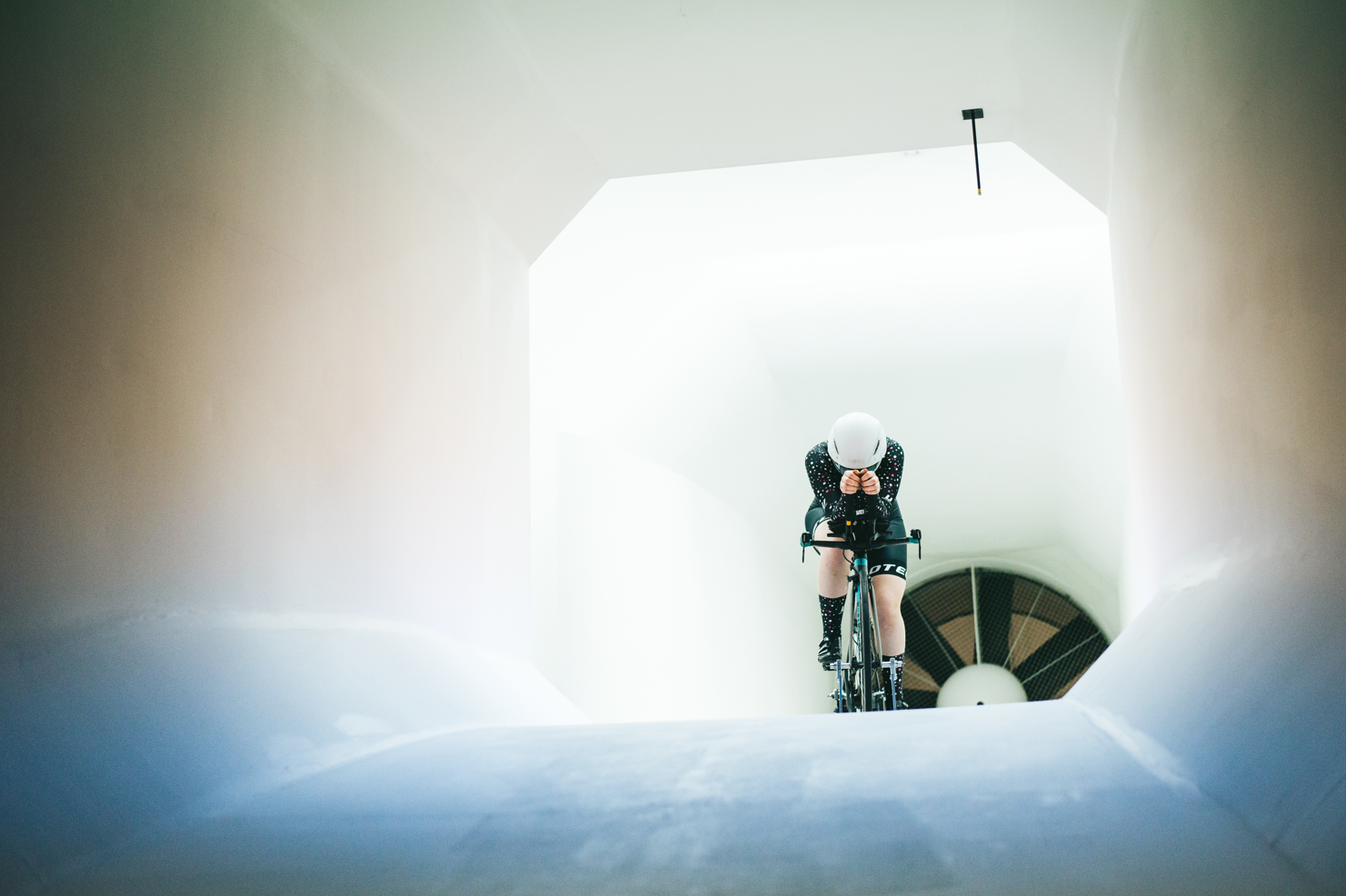All of us are wondering how we can get that little bit more aero and consequently, faster, on our next race or ride. This is a thought that begs on the mind of all cyclists, be it the newly initiated, or those at the top of the sport, everyone wants to get faster.
With a few little tips from us we’re confident to see you riding just that little bit faster.
1. Body/Riding Position
Our bodies make up the largest area of air resistance when riding, more so than the bike beneath us. For this reason the way we sit on the bike has a drastic impact on how fast we can go. World tour teams will spend thousands to take riders to wind tunnels to make small improvements in body position and aerodynamics, with the ultimate goal of reducing the riders drag coefficient (CdA). The lower the CdA the faster a rider can go for the same given power.

Unfortunately, not all of us can afford or are willing to spend thousands of euros/pounds to test in a wind tunnel, nevertheless, you can still reduce your CdA. A great method for doing this is to set your home trainer up and ride in front of a mirror. With the visual cues from the mirror you can see how your current position is and adjust yourself into being lower and more compact on the bike. The reason for the mirror is to show that what the body and brain perceives might not be the true image, sometimes a position can feel low or narrow, but on review with photos or a mirror it proves not to be.
If riding in a TT position, a useful tip is to shrug your shoulders up and forward, this will help to reduce their overall width, ultimately reducing drag. Try this in front of the mirror or out on your next TT and see if you notice the difference. It may take some time to be able to ride for extended periods but the more you do it the more natural it will become.
2. Well fitted clothing
With the body accounting for such a large effect on our aerodynamics, the clothing we wear can either help or further hinder how fast we go. In general, you want your clothing to be as tight and well fitted as it can be. Regardless of what the clothing item is, it is crucial to select the correct and best fitting size, any flapping in jerseys or speedsuits can have a more substantial impact on your aerodynamics than you might think.
3. Aero Clothing
Beyond well fitting clothing, aerodynamically designed and tested clothing can have substantial impacts over standard non optimised garments. For a lot of new people to the sport this can be hard to understand. The cheapest upgrade you can make is aero socks, for just €30 a pair, socks like our Velotec Aero Sock 2.0 can save you up to 15w versus a standard pair of cotton/polyester socks.

If you are looking for something more substantial, a well designed and tested speedsuit offers unrivalled aerodynamic gains, particularly when matched against a standard jersey and bibs or even a non specifically designed speedsuit. Differences between each iteration of aero suits prove to be quite large, for example we found at higher speeds the Velotec Pro8 model was found to be up to 12 watts faster than an already optimised suit the Dynamic. So imagine the differences between a conventional suit. Soon we plan to quantify the data of a generic early 2000’s designed speedsuit (a design many brands still use today), against the fastest suit we have ever made to see what the real differences are. We think they will be quite surprising.
4. Carbon Wheels
Deep section carbon profile wheels are proven to make an aerodynamic difference to your bike and make you go faster. If you are still riding around on alloy shallow profile rims you will immediately notice the difference switching to deeper section carbon wheels. Testing that compares an 80mm deep wheel vs a shallow alloy wheel indicates that even at speeds as low as 30 km/h you can save 15 watts, and up to 50 watts difference at 50 km/h. These differences are huge, however they do come at a price, with upgrades in wheels costing into the thousands.
5. A Clean Bike
It may sound very simple, but a clean bike is certain to go faster than a dirty one. All of the large bike companies use computer modelling and wind tunnel testing to design and develop their bikes to be as fast as they can be. Engineers and designers spend thousands of hours doing this, however they do not design bikes with dirt, sweat and road grime on them.

A bike is sure to be faster when it is as clean as the day it came from the factory, the way it was designed. Any dirt, mud, grease or other contaminants are sure to disrupt the profiles of the frame tubes, affecting the aerodynamics, and slowing the rider. So if you’re looking at a dirty bike now, go give it a clean, you’ll be sure to go faster and although not an aero advantage your drive train will also love you for it.
With a few of these tips implemented we’re confident you can see a difference in how fast you are on your next rides.


